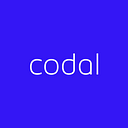The Agile product owner: a role that’s not to be taken lightly
At Codal, we take Agile and Scrum seriously. We talk about the Agile Manifesto and its principles on a regular basis. We also spend time talking about the Scrum guide. We like to think of a development team as composed of three groups that act as the legs of a stool. The developers do the work and are responsible for making sure they deliver value. A Scrum Master helps the development team improve and coaches them to increase value for the customer. The final leg of the development team is the product owner. It is one of the most difficult responsibilities in Agile.
What is a product owner?
According to the Scrum Guide, an Agile product owner is, “the sole person responsible for managing the product backlog.” When you work with Codal, we have a clear process of how we work. We do discovery to get to know your business. Next, we create strategies to make you successful and then begin the design process. Once we begin the engineering process, we recommend each client provide us with the sole point of contact to act as a product owner.
Being a product owner is a powerful role because it involves taking the information gathered in discovery, strategy, and design and transforming it into impactful user stories. A typical user story can fit on a post-it note. It is not as cumbersome as a requirements document, and the development team should be able to deliver it in a short period of time. Thus, the product owner is like someone building a custom home. Each step of the way, they see the walls go up, the wires being strung, and the plumbing installed. Working this way helps the client avoid surprises. A product owner is a benevolent monarch and it is up to the development team and Scrum Master to do everything to make them successful.
Leading the charge
Product ownership comes with tremendous responsibility. The product owner needs to be able to effectively prioritize work. To be successful, they need to work with us in close partnership and balance the needs of their internal stakeholders. This means having the authority to say “no.” It takes about five hours per week of formal meetings and countless hours collaborating with Codal to write user stories and maximize value. The people at Scrum.org are clear about that responsibility. They write, “for the product owner to succeed, the entire organization must respect his or her decisions. The product owner’s decisions are visible in the content and ordering of the product backlog. No one can force the development team to work from a different set of requirements.” I call this passage the social compact of Agile.
As the client and product owner, you have the authority and responsibility to tell us what to work on and in what priority. In exchange, the development team tells you how long it will take to accomplish. Sometimes a story is too big to complete in a two-week increment. The team may recommend that the story should be split into smaller pieces so there is something to demonstrate sooner. Other times, the team will request more work because they have the capacity. In both cases, it is up to the client and the product owner to make the call on how to proceed.
Agile: an essential function
If it sounds like it is a difficult job, that’s because it is. But Codal is happy to walk you through the process. Everyone you work with at Codal will make you comfortable with the role and provide you with the necessary direction.
An Agile team is like a stool; the development team, Scrum Master, and product owner work together like legs. Without a product owner, the stool will collapse because of its rickety structure. We want you to succeed, so it is up to us to make you, the client, be the best product owner you can be.
Originally published at https://codal.com.
